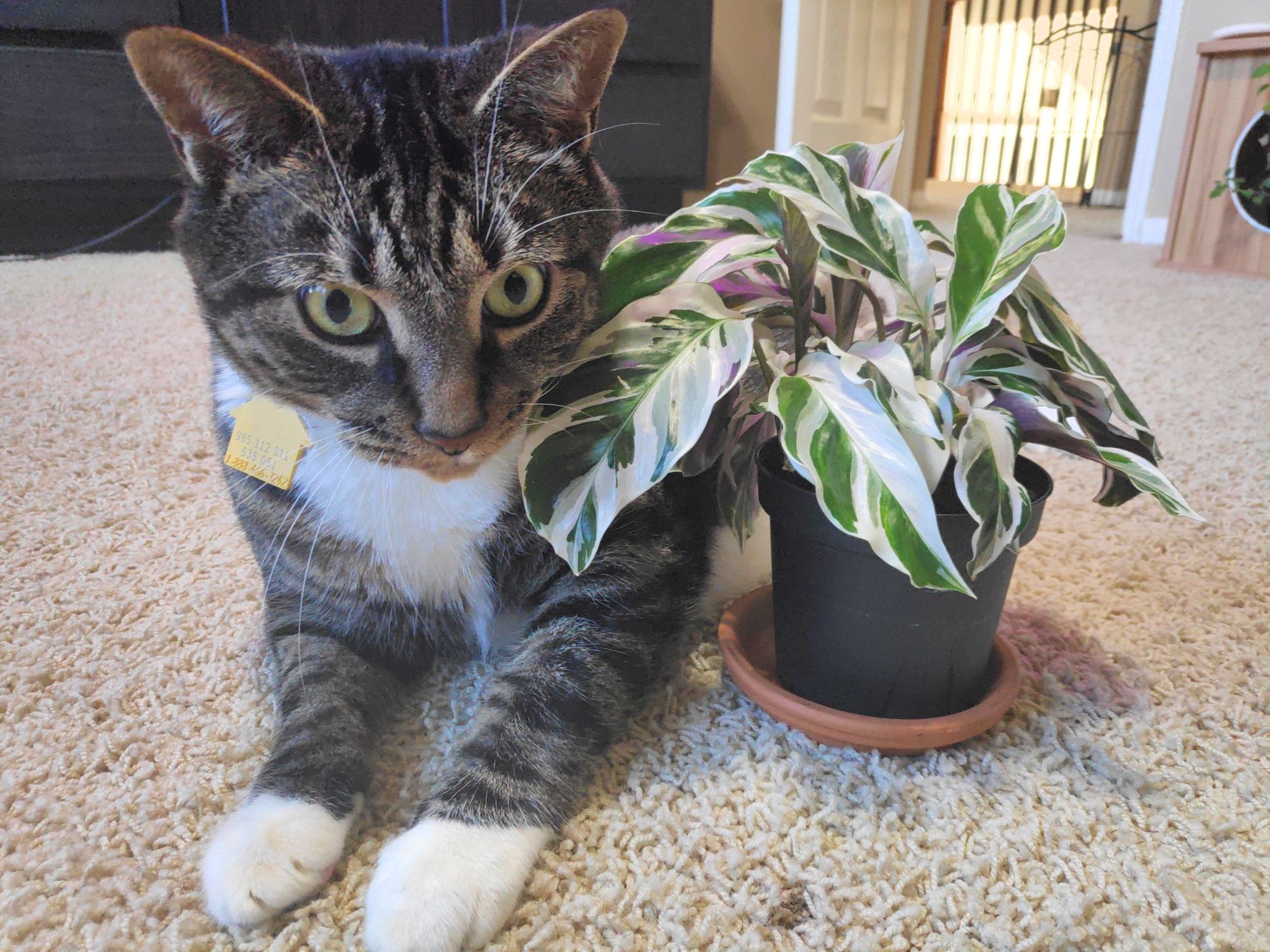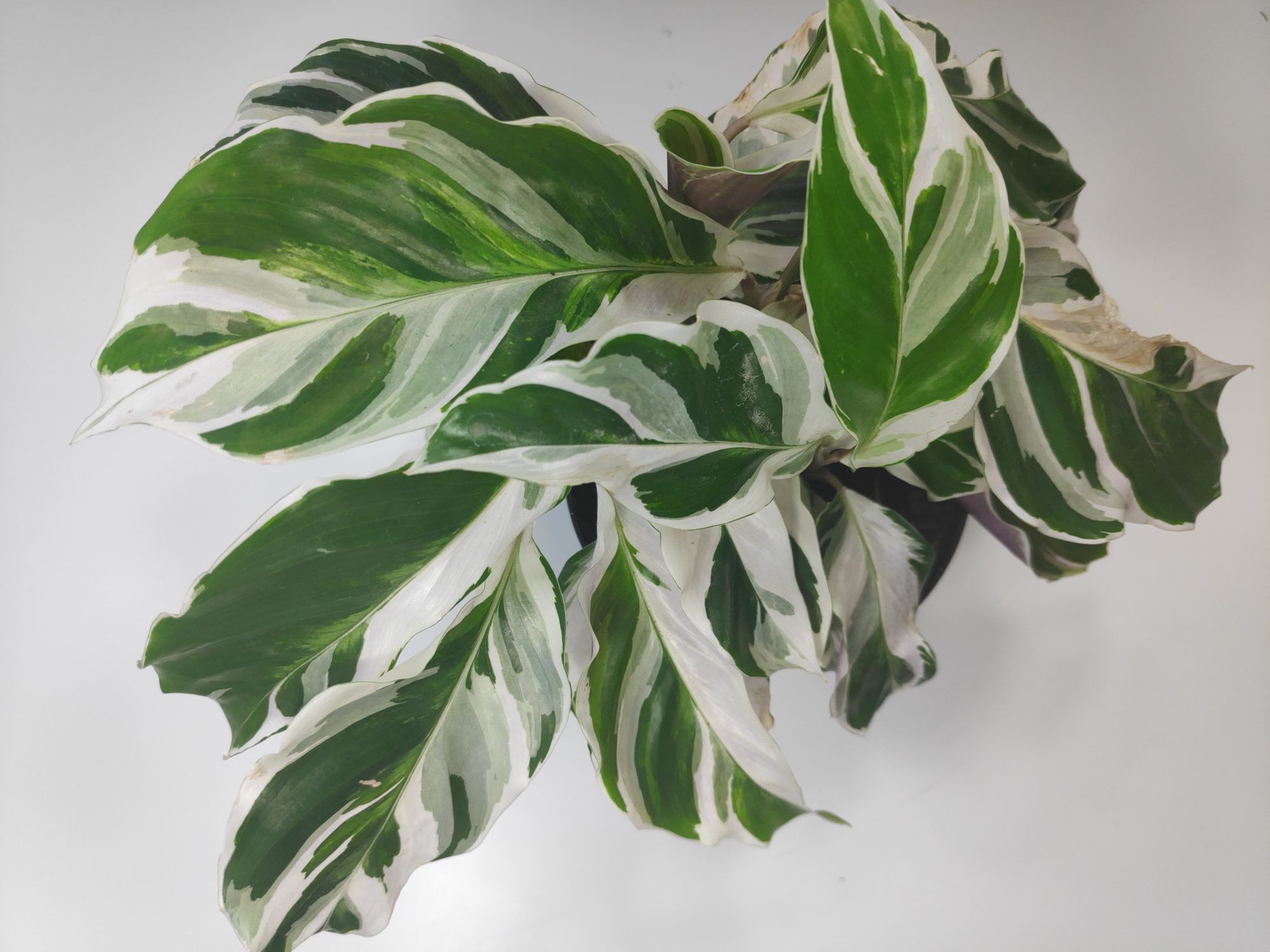Calathea hybrid, common names: White Fusion Peacock Plant, prayer plant
Plant Care Cheat Sheet
Difficulty Level: Intermediate
Light Requirements: Medium indirect light
Humidity Requirements: High humidity
Calathea white fusion is one of the most beautiful variegated houseplants available at an affordable price. Sometimes called a peacock plant, it features white splotched patterning on the leaves, and pink/purple coloration on the undersides and stems. A unique cultivar of the popular Calathea genus, the white fusion is one of many plants commonly referred to as "prayer plants", which also includes Maranta plants. The plants get their name from their tendency to fold up at night, mimicking a "prayer" pose.
Calathea have a bit of a reputation for being tricky - but once you get the hang of it, the plants can be relatively forgiving and bounce back even after months of mistreatment.
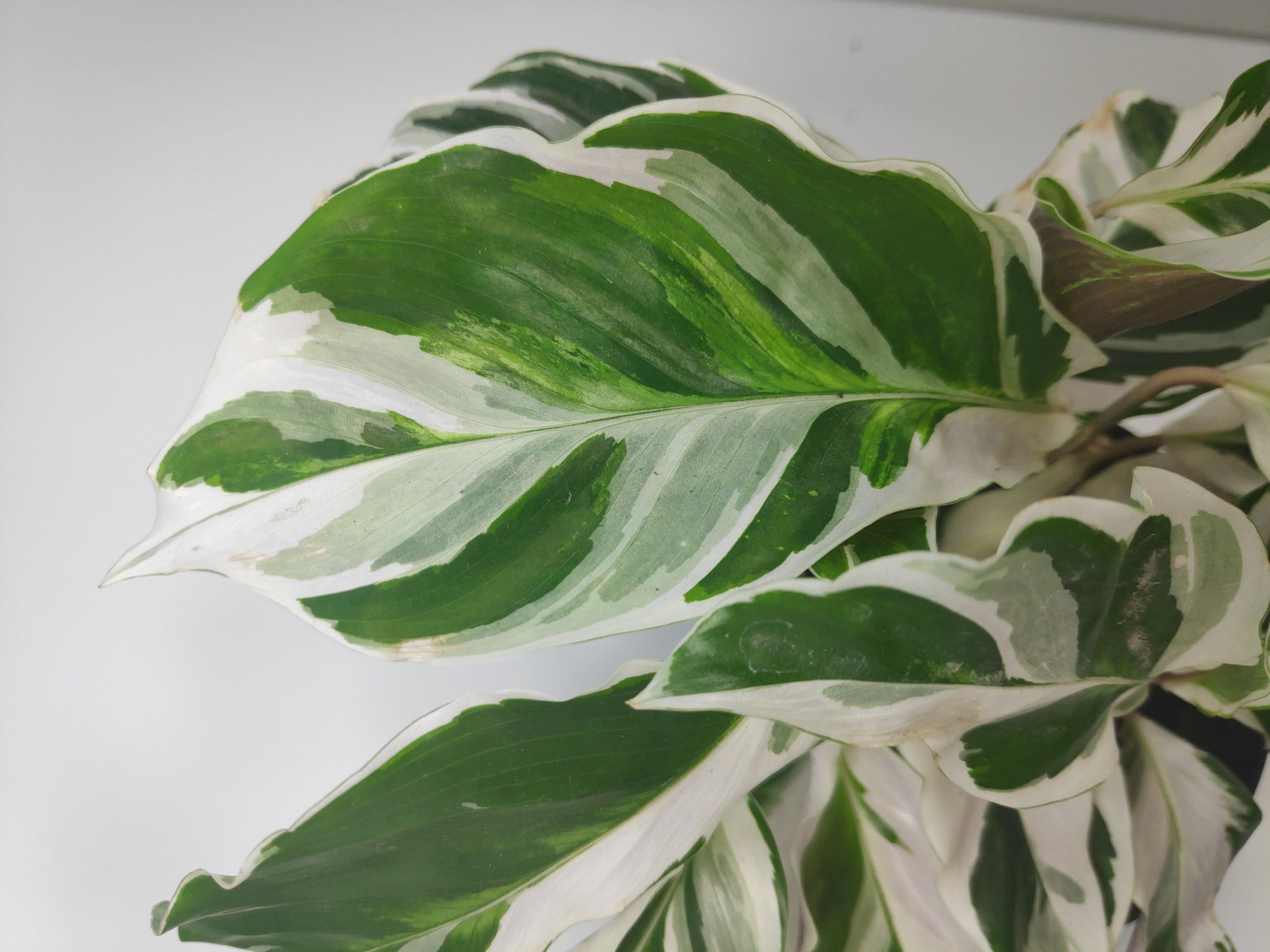
Care Requirements
Calathea white fusion appreciates bright indirect light, but can handle medium indirect light as well. Keep the Calathea white fusion out of direct sunlight, or the patterns on the leaves may get bleached out.
Typically, placing your plant just back from an East, West, or North facing window will work well. Consider adding a sheer curtain to help diffuse the light from the window and protect your plant's foliage.
The most important requirement for caring for any Calathea, and especially the white fusion, is high humidity. Calathea are native to the South American tropics, and evolved in a very humid environment. White fusion leaves are especially thin compared to other Calathea, and are even more prone to drying out.
Keep your white fusion in a high-humidity environment with a humidifier. Personally, I keep my white fusion right next to this humidifier, which I've used with my plants for years. You may also want to bring your Calathea with you into the bathroom when you shower for an extra humidity treat! (Do not let hot water actually touch the leaves, it will burn them).
If you don't have a humidifier, try placing your Calathea near water. This can happen either by using a pebble tray with water, keeping it in a high-humidity location like in a bathroom, or regular misting. Also try keeping high-humidity plants together, as they will help keep the air moist for each other.
Calathea will do well in a terrarium thanks to the high humidity provided by the enclosed space.
Water Calathea with distilled or filtered room temperature water.
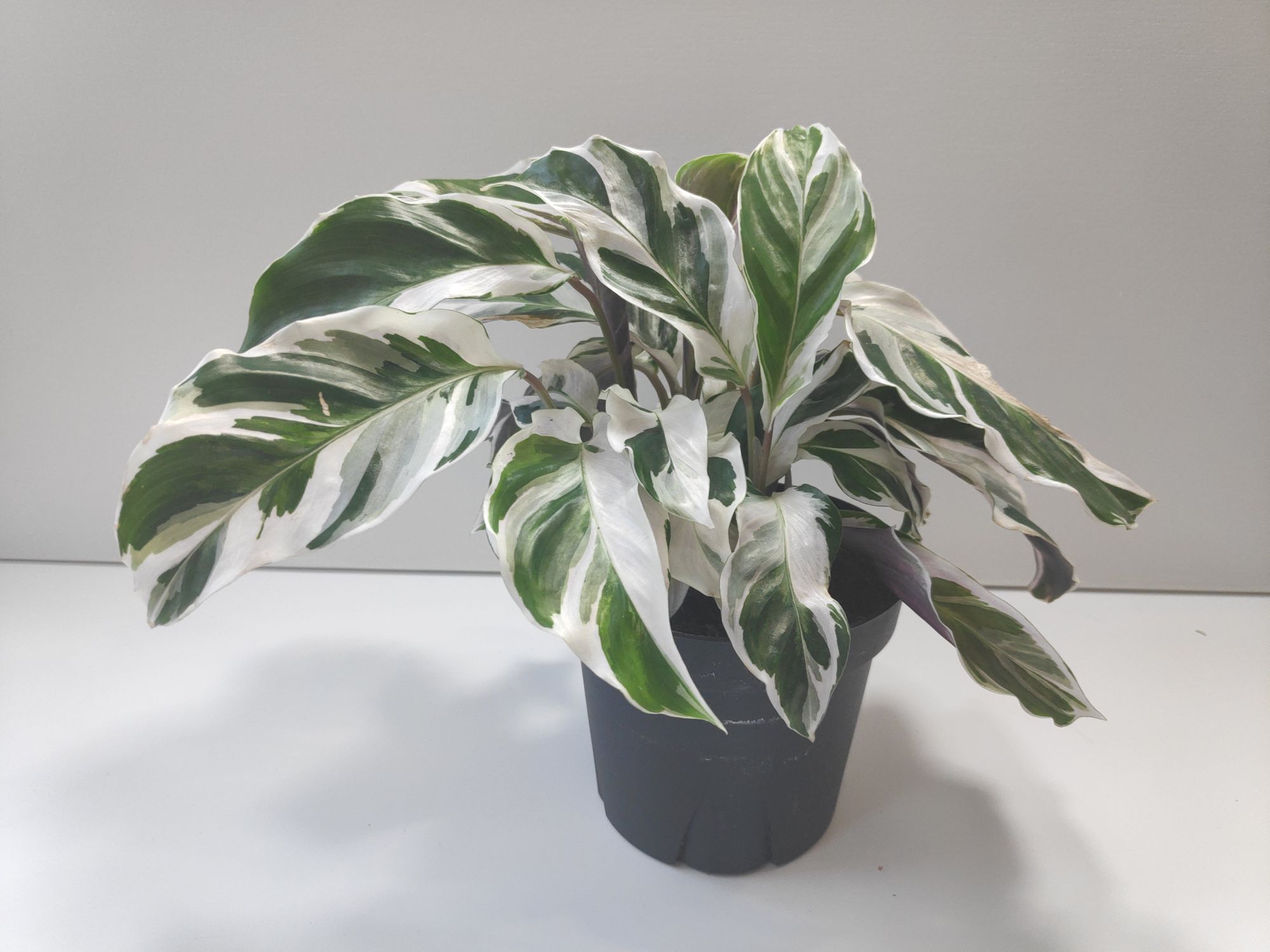
Common Problems
Rot is the biggest threat facing Calathea white fusion and other high-humidity plants. The moist soil environment is ripe for bacteria and fungus to grow, and may also attract pests. Avoid rot by not over-watering, making sure the top of the soil has dried before watering again. Be sure to use a pot with a drainage hole, and don't let your Calathea sit in water. You may also want to apply neem oil occasionally, which is a natural insecticide and will help prevent pests like fungal gnats from thriving in the moist environment.
If you experience rot, remove all soil, remove rotted parts of the root or plant, and replant into new soil.
If your leaves are curling or crisping, this means you either are not providing enough water or humidity. Too much light may also cause leaf curling - this is a tactic plants use to avoid the light and preserve moisture under duress.
Crisping leaves may also be a result of chemicals in your water, try watering with filtered, distilled, or rain water instead.
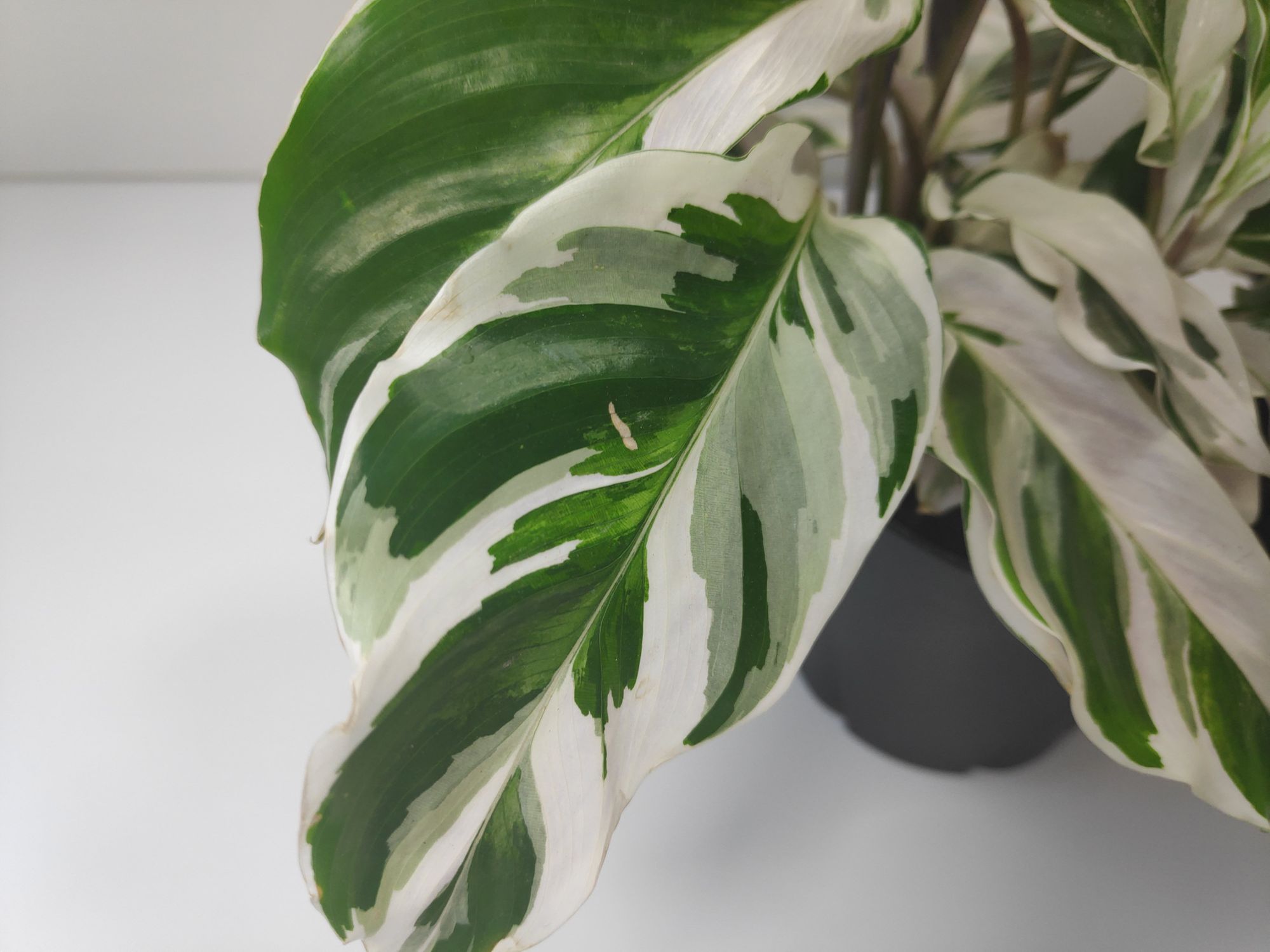
Pet safe plant!
All Calathea are safe for cats and dogs if ingested, so make a good addition to any home with fur babies. However, you'll probably want to keep your Calathea away from your pets or children anyway so they don't destroy the beautiful foliage.
